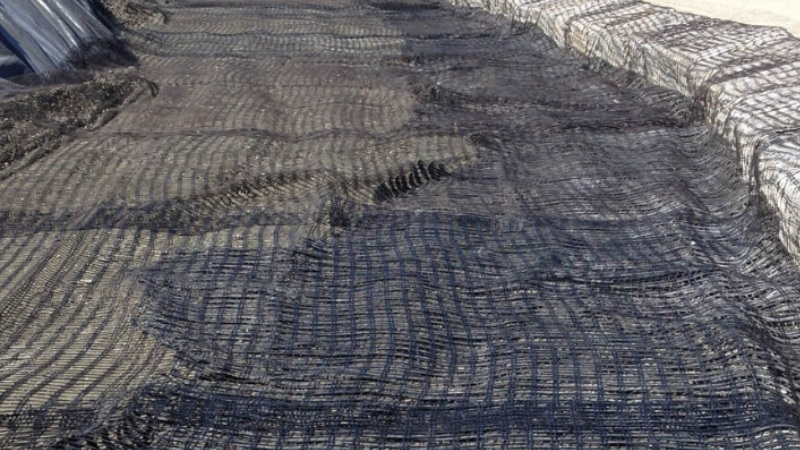What are the differences?
There is a range of different geogrids available on the market, each suitable for different applications. One of the most obvious differences between types of geogrids is their construction, which can be broadly divided into three categories:
- Biaxial Geogrids
- Triaxial Geogrids
- Uniaxial Geogrids
Secondly, what are they made from?
Typical polymers (or plastics) that geogrids are made from include polyester (PET), polypropylene (PP) or High Density Polyethylene (HDPE). The material they are made from determines its construction or manufacturing method.
Geogrids were first introduced in the 1970s as a way to mechanically stabilise granular fills, and since their inception, they have become more technologically advanced, spawning a range of variants and types that are suited for different purposes.
Most often used for reinforcing pavements and capping layers in road and railway projects, biaxial and uniaxial geogrids were first to hit the market, with triaxial geogrids following not far behind.
Although the triangular apertures of triaxial geogrids were heralded as a more effective way to reinforce soil, various trials have shown that results can vary (refer to the attached report for more information).
How geogrids work
The main engineering mechanism for pavements reinforced with geogrid is lateral confinement of the granular material. This is achieved by interlocking the granular fill into the openings in the geogrid. The lateral confinement and interlocking forces of the geogrid are critical to holding the pavement in place, so the design of the geogrid has been studied, refined and perfected over the years.
That is why, rigid, integral geogrid junctions provide the best performance for this mechanism.
Nowadays, there are variations typically available from a geosynthetics supplier. Let’s take a look at these in more detail.
What is a biaxial geogrid?
Biaxial geogrids are designed to handle forces in two lateral directions in the ground, and they are generally designed with square or rectangular apertures. These types of geogrids are ideal for situations where dynamic stress/load is applied in both orthogonal directions, such as in road and railway traffic.
Designed to contain and stabilise granular material and improve its bearing capacity, they help to reduce select granular material costs due to the reduced thickness of aggregate and subbase material required in a temporary or permanent P-way pavement.
What is a uniaxial geogrid
One of our most popular uniaxial geogrids is TerraGrid® Uniaxial PET geogrids. This high-performance soil reinforcement solution offers excellent tensile strength in one direction. TerraGrid Geogrid interacts with the soil particles to create a permanent composite soil/geosynthetic structure.
This type of grid is best suited for walls and slope soil reinforcement applications, as the load transfer is only in one (uniaxial) direction.
Get help and advice on the right geogrid for your project
The Polyfabrics engineering team is here to offer support, advice on product selection and engineering guidance on our range of geosynthetic products. Contact our technical team to find out more.

